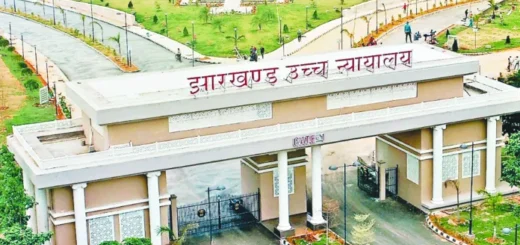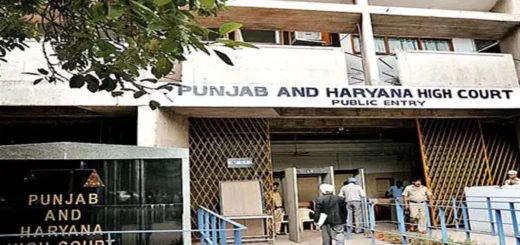Article 32- Right to Constitutional Remedies and Public Interest Litigation
The Constitution of India has consistently emphasized the importance of Fundamental Rights, establishing mechanisms for their enforcement. This paper aims to thoroughly assess Article 32 and its evolution over time. The author will explore the conceptual framework surrounding this article, alongside relevant case law. A detailed interpretation will be provided, with particular focus on the significance of the ‘Right to approach the Supreme Court’ and the issuance of Writs. The validity of these provisions within the Indian context will be a central theme of this analysis.
Synopsis:
- Introduction
- Article 32
- Diffrence between Article 32 and Article 226
- Writs
- Quo Warranto
- Mandamus
- Certiorari
- Prohibition
- Public Interest Letigation
- Conclusion
- Introduction
Article 32 of the Indian Constitution is regarded as one of the most significant provisions concerning the protection of individual rights. It empowers individuals to seek judicial redress in a court of law when they believe their rights have been violated or unjustly taken away. The Supreme Court possesses the authority to uphold the rights conferred upon individuals by the Constitution. This article guarantees individuals an unequivocal right to safeguard their fundamental rights, allowing them to approach the Supreme Court directly without the necessity of navigating through lower courts. The primary aim of Writ Jurisdiction under Article 32 is to facilitate the enforcement of these fundamental rights. - Article 32
Article 32 of the Indian Constitution empowers individuals to approach the Supreme Court in pursuit of justice when they believe their rights have been unjustly infringed upon. The Supreme Court is vested with the authority to issue directives or orders to enforce any rights conferred by the Constitution, as it is regarded as the “protector and guarantor of Fundamental Rights.” - Diffrence between Article 32 and Article 226
Article 32 empowers the Supreme Court to issue various forms of directions, orders, and writs, including habeas corpus, mandamus, prohibition, certiorari, and quo warranto. In contrast, Article 226 grants every High Court the authority to issue similar writs and orders, including those for habeas corpus, mandamus, prohibition, certiorari, and quo warranto, as well as for other purposes akin to those of an administrative tribunal.
It is important to note that Article 32 may be suspended during a state of emergency by the President of India, with the exception of Articles 21 and 22. Conversely, Article 226 remains inviolable and cannot be suspended even in emergency situations. Article 32 is classified as a Fundamental Right, allowing an aggrieved individual to seek redress from the Supreme Court for the enforcement of this right. In contrast, Article 226 does not confer a right in the same manner as Article 32.
As the protector of Fundamental Rights, the Supreme Court is obligated to issue writs and cannot refuse to do so. However, the High Court possesses discretionary power in the issuance of writs. The Supreme Court has jurisdiction to issue writs throughout the entire territory of India, while the High Court is limited to issuing writs within the jurisdictional boundaries it oversees. - Writs
- Habeas Corpus
Habeas Corpus is a writ that is enforced to protect the fundamental right to liberty of an individual against unlawful detention. This writ commands a public official to deliver a detained person in front of the court and provide valid reasons for the detention. However, this writ cannot be issued in case the proceeding is for contempt of a legislature or a court. - Quo Warranto
Quo warranto is a legal instrument employed against an individual who asserts or unlawfully occupies a public office. This writ compels the court to investigate the basis of the individual’s claim, specifically questioning ‘by what authority’ the claim is made. It serves to examine the legitimacy of a person’s assertion to hold a public office, thereby acting as a safeguard against the unauthorized assumption of such an office by any individual. - Mandamus
The writ of mandamus is directed towards a subordinate court, a government official, or a corporation or institution, instructing them to carry out specific actions or responsibilities. In contrast to the writ of habeas corpus, mandamus cannot be issued against private individuals. This writ may be employed to compel the execution of a particular task or, in some instances, to mandate the cessation of an activity. - Certiorari
The term “certiorari” literally translates to “to be informed” or “to be certified.” This writ is issued by a higher court to a lower court or tribunal, directing it to either transfer a pending case to itself or to annul the lower court’s order in a specific matter. It is typically invoked in situations where there is an overreach of jurisdiction, a deficiency in jurisdiction, or a legal error.
The writ of certiorari serves both preventive and remedial functions and is applicable solely to judicial or quasi-judicial entities, excluding administrative bodies. However, following a Supreme Court ruling in 1991, this writ may now be issued against administrative bodies when individual rights are impacted. It is important to note that a writ of certiorari cannot be utilized to compel the production of records or documents related to an Act or Ordinance, nor can it be employed to annul such Acts or Ordinances. - Prohibition
The term “prohibition” refers to a writ issued by a Higher Court to a Lower Court or Tribunal, instructing the judge or involved party to halt litigation due to the inferior court’s lack of jurisdiction to adjudicate the matter at hand. This writ serves as an extraordinary legal remedy and is seldom employed. Similar to the writ of certiorari, it can be directed against both judicial and quasi-judicial bodies.
A key difference between certiorari and prohibition lies in the timing of their issuance during legal proceedings. When a subordinate court engages in a hearing for a case over which it possesses neither jurisdiction nor the legal authority to render a decision, the affected party may seek a writ of prohibition from the Higher Court. This writ would mandate the subordinate court to cease its proceedings. Conversely, if the subordinate court renders a decision that it is not legally authorized to make, the aggrieved party must approach the Higher Court to have that order annulled.
- Habeas Corpus
- Public Interest Letigation
The notion of public interest litigation (PIL) was first introduced in India by Justice Krishna Iyer in the landmark case of Mumbai Kamgar Sabha vs. Abdul Thai in 1976. Furthermore, the Indian model of PIL can be seen as an enhanced adaptation of the American PIL framework. Essentially, public interest law aims to provide legal representation for marginalized groups and the broader populace. During the Emergency period from 1975 to 1977, the nation experienced the oppressive characteristics of the colonial legal system, marked by state repression and widespread governmental lawlessness, resulting in a significant erosion of civil and political rights. Numerous innocent individuals, including political dissidents and journalists, were incarcerated, which created an environment conducive for the judges of the Supreme Court to transcend the limitations of the Anglo-Saxon legal procedures and facilitate access to justice for the economically disadvantaged. As a result of this evolution, PIL emerged as a formidable instrument for the enforcement of public duties.
The significance of Public Interest Litigation (PIL) lies in its capacity to utilize legal frameworks to promote human rights and address a wide array of public concerns. By embracing the concept of PIL, the judiciary endeavors to safeguard human rights by establishing a novel legal framework and broadening the interpretation of fundamental rights. The process of filing a PIL is relatively cost-effective, allowing individuals to seek relief with ease, thereby serving a remedial function. PIL serves as a mechanism for enhancing societal conditions that may not be adequately addressed by the executive branch, as the judiciary holds the executive accountable. In instances where an individual is unable to present sufficient evidence due to socio-economic constraints, the court has the authority to appoint a commission to investigate the matter and gather pertinent information. Through judicial oversight, the court aims to uphold state institutions and protect the rights of marginalized groups, reflecting the numerous initiatives undertaken through PIL to foster a sustainable environment.
Merits: Public Interest Litigation (PIL) serves to benefit not only individuals but also marginalized segments of society, as it offers a cost-effective legal remedy. The PIL process facilitates expedited trials, as it can be initiated in both the High Court and the Supreme Court, thereby circumventing the need for a sequential approach in the judicial system. This mechanism plays a crucial role in the management and protection of human rights, potentially fostering a new democratic framework.
Demirites: The affordability of filing a PIL has resulted in an increased number of submissions, which can lead to cases lacking substantive legal merit and being utilized as instruments of harassment. The high volume of PILs can overwhelm the courts, diverting their attention from other important litigations. Additionally, there are instances where individuals exploit PILs as a means to further their own interests, effectively weaponizing the process for personal gain.
Aspects:
Remedial in Nature
Representative Standing
Citizen standing
Non-adversarial Litigation
Smoothing the strict rule of Locus Standi
Epistolary Jurisdiction - Protection of Human Rights
The characteristics of Public Interest Litigation (PIL) enhance the mechanisms for protecting human rights, with courts undertaking the following measures to uphold these rights:- The establishment of a novel framework for human rights has led to an expanded interpretation of fundamental rights, including equality, life, and personal liberty. This evolution has given rise to rights such as the right to a speedy trial, access to free legal aid, dignity, means of livelihood, education, medical care, a clean environment, protection against sexual harassment, and freedom from solitary confinement, bondage, and exploitation. These newly defined rights are enforced through PIL.
- The shift towards a more democratic state contributes to the assurance of justice. This is achieved by broadening the traditional concept of locus standi, allowing any public or social action group to represent victims in court. Courts can also take cognizance of issues through informal means, such as letters or telegrams, a practice known as epistolary jurisdiction.
- The introduction of innovative forms of relief within the court’s writ jurisdiction allows for temporary compensation to be awarded to victims of governmental misconduct. This approach diverges from the Anglo-Saxon model of adjudication, as the provision of damages in PIL cases does not preclude the aggrieved party from pursuing a civil suit for damages. In PIL matters, the court is empowered to provide various forms of relief to victims.
- Conclusion
Article 32 grants extensive authority to the Supreme Court to safeguard the fundamental rights of Indian citizens, making it one of the most progressive provisions in the Indian Constitution. Although the Constitution guarantees fundamental rights, they are frequently perceived as non-fundamental. This perception arises from the complexities, inefficiencies, and high costs associated with the judicial system. Violations of fundamental rights often go unaddressed due to the significant time and financial resources required to seek justice. Consequently, many individuals choose to overlook infringements of their rights rather than pursue legal recourse. This situation underscores the compelling argument for the provision of exemplary damages and compensation.
Judicial activism in this context serves to uphold and reinforce the primacy of fundamental rights, representing a commendable development. The current trajectory appears to be moving in a positive direction. It will be intriguing to observe how the judiciary, through its proactive approach, enhances the efficiency, legality, and fairness of the judicial process.



